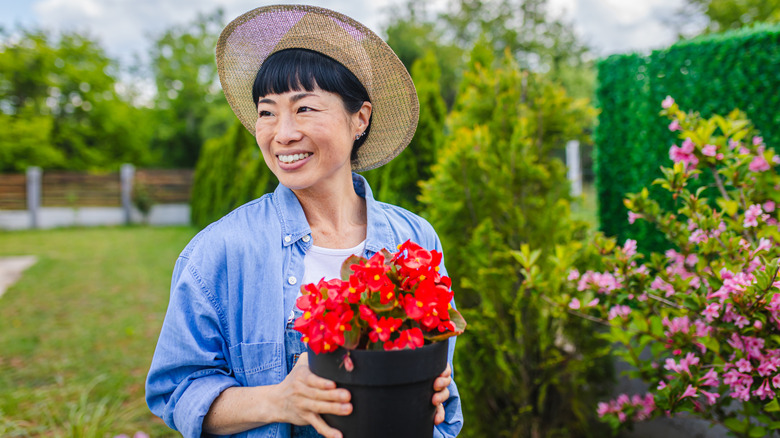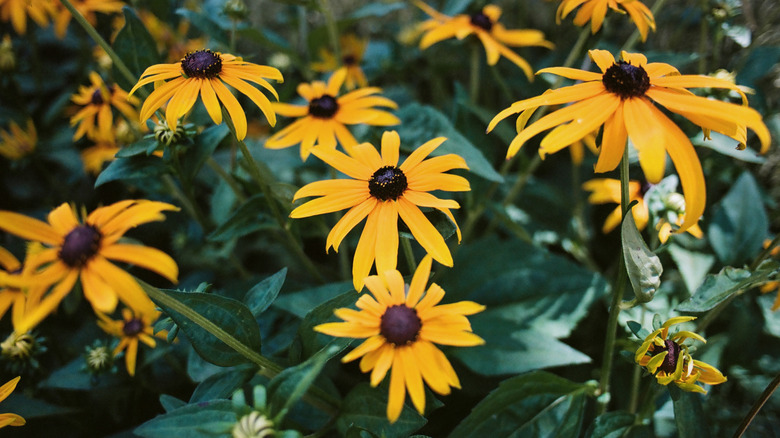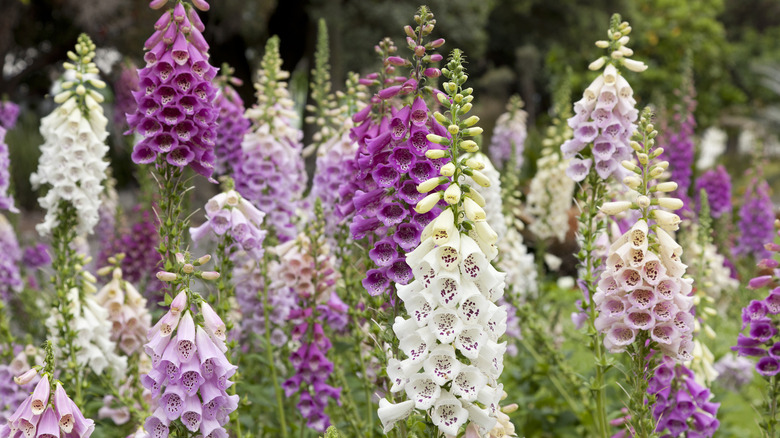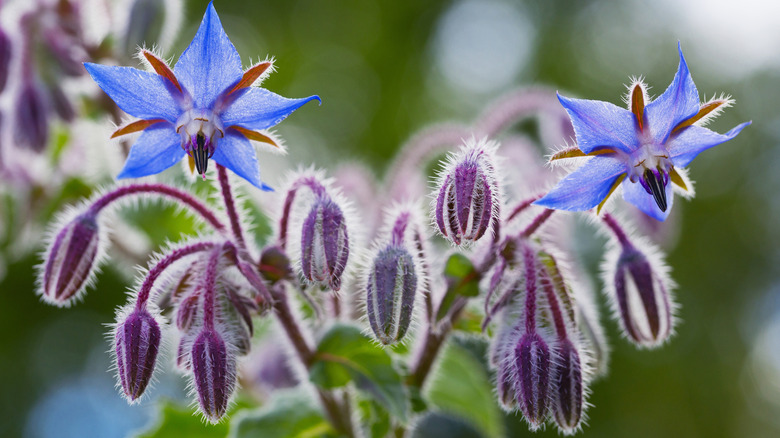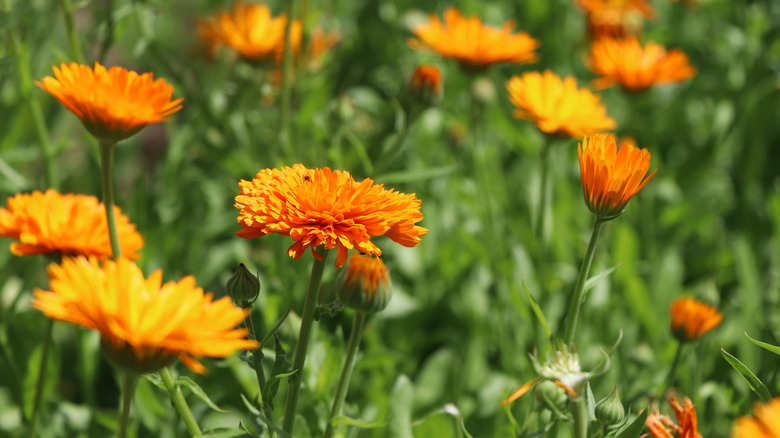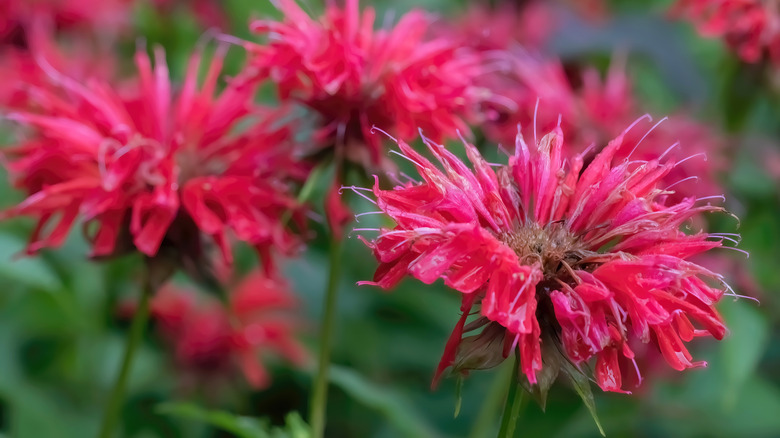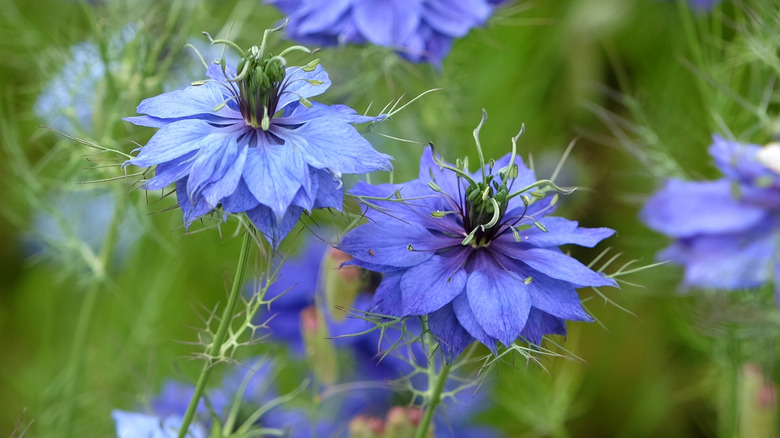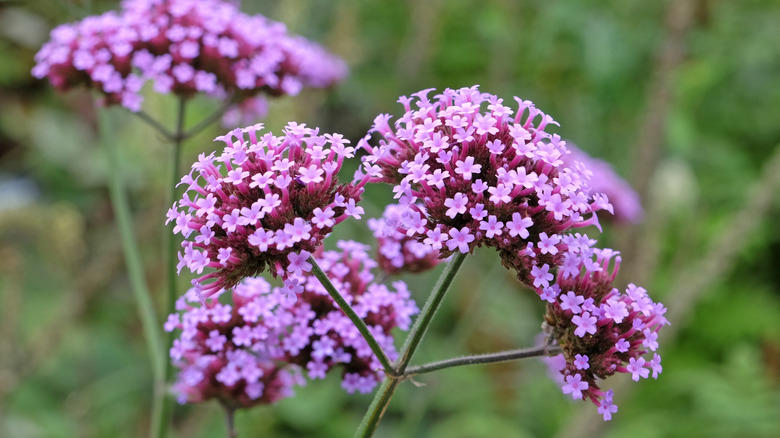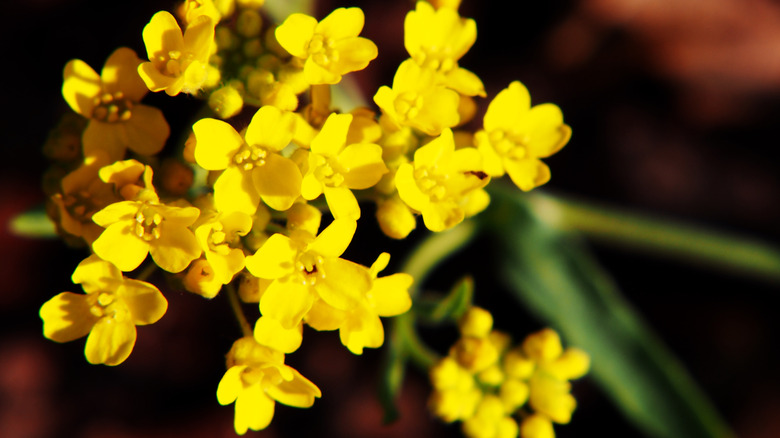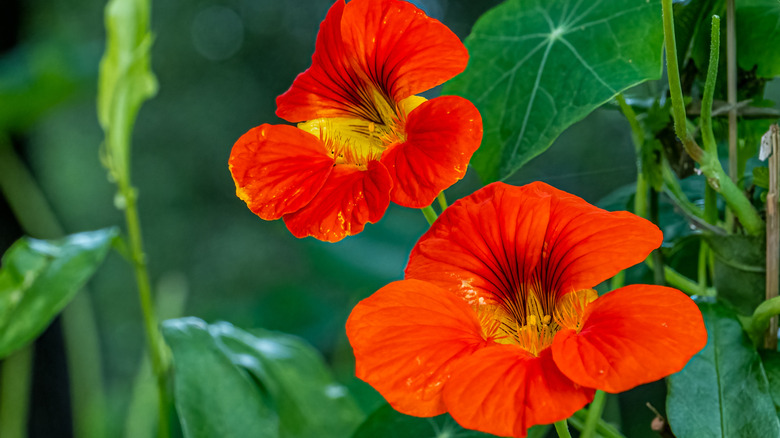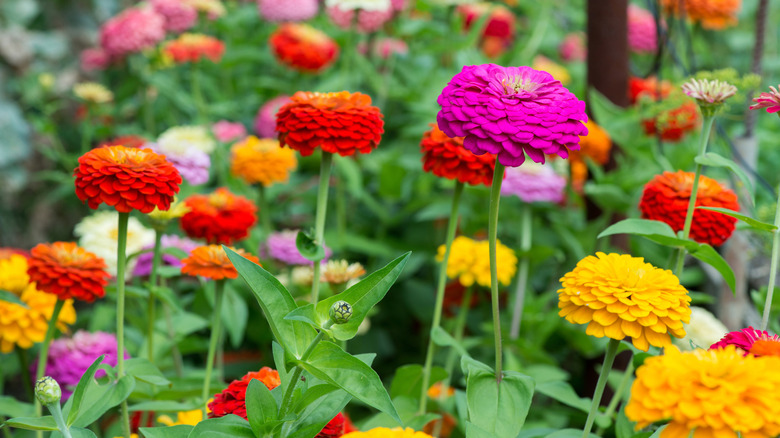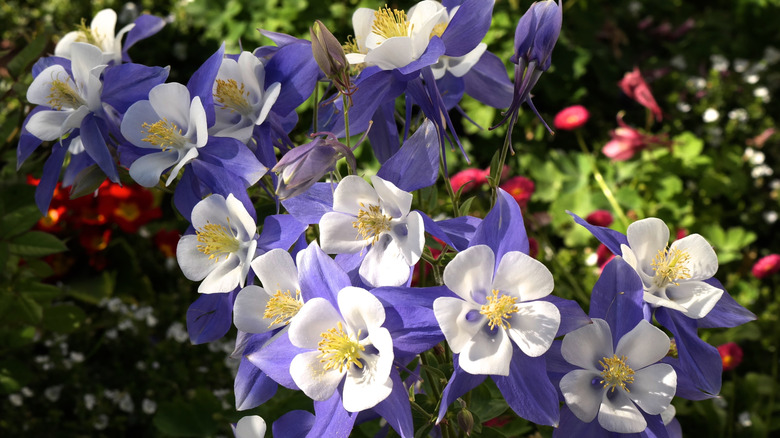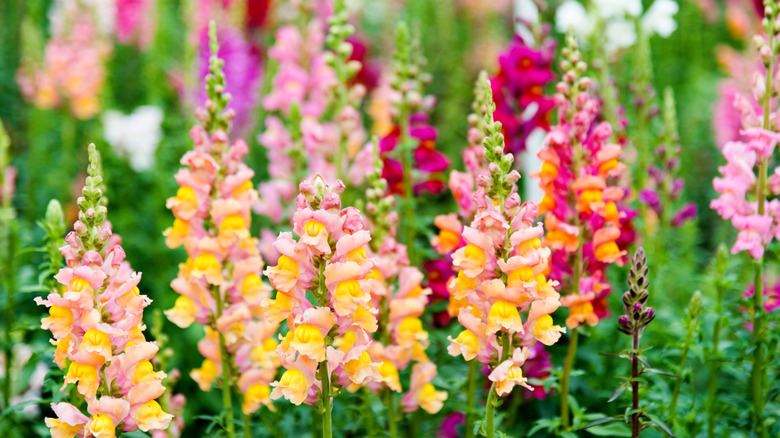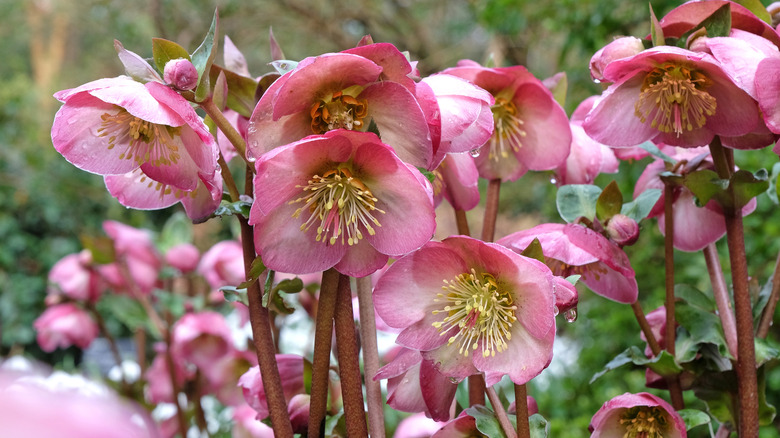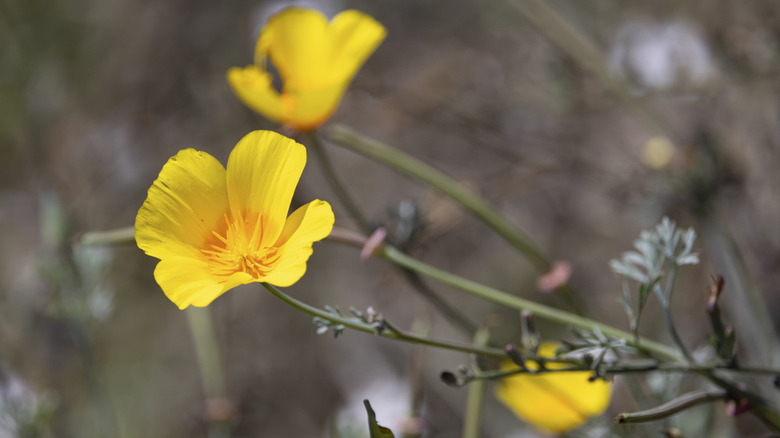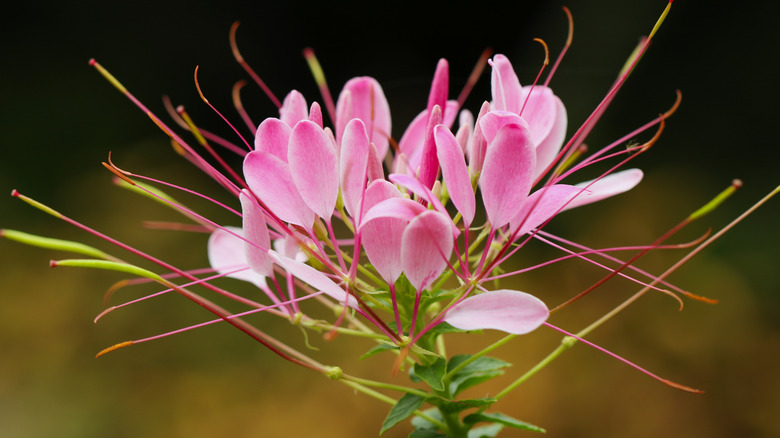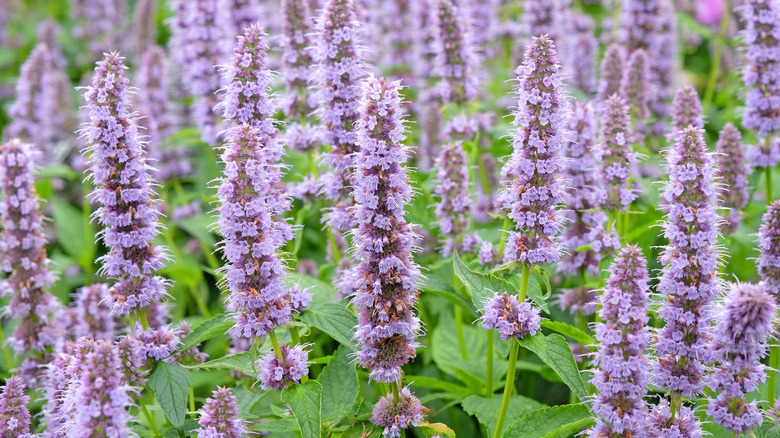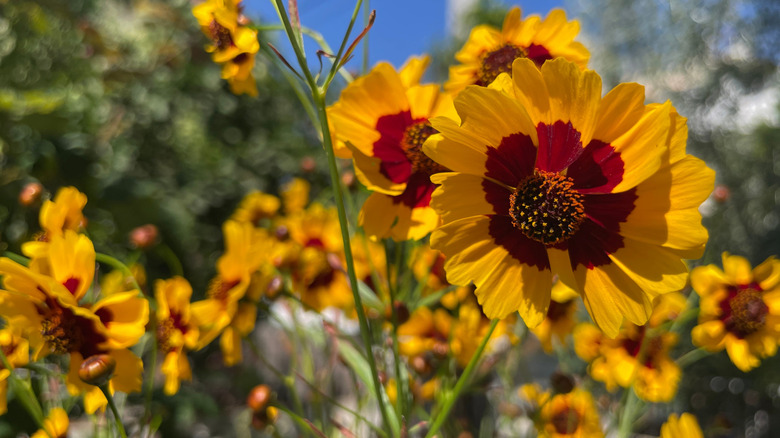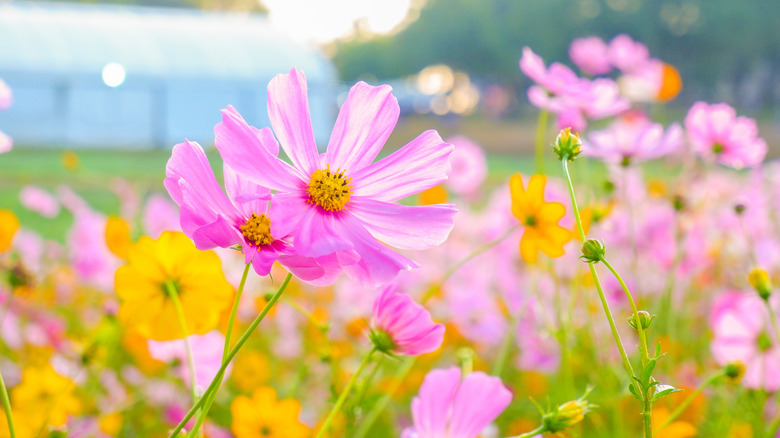18 Types Of Self-Seeding Flowers For A Yard Full Of Effortless Color
We all love a garden of colorful flowers, and it turns out they're not just pretty to look at. They can be good for our health, too. Studies show that colorful flowers can brighten our mood and reduce stress. Of course, if you're stressing about the effort and expense of planting annuals in your flowerbeds every year, then you might lose all the good benefits of bright blooms. If you're looking for an easier –- and cheaper — way to keep your garden blooming, try self-seeding flowers like snapdragons, marigolds, bee balm, or black-eyed Susans.
Self-seeding flowers drop their own seeds usually at the end of the season. The seeds tend to germinate where they fall, or are carried by birds, with almost no effort. Usually, they just need contact with the soil and enough moisture and sunlight. The interesting thing about self-seeding flowers is that they might not always end up looking like their parent. New seedlings might grow different colored flowers or a different sized plant.
Of course, self-seeding plants can plant themselves anywhere, so it's a good idea to keep an eye out for tiny seeds when you're weeding. Make sure they're planting themselves where you'd like them in the garden. If self-seeding plants become a little too aggressive, you can thin them out later. Although, honestly, having too many flowers might be a good problem to have. Who doesn't want a bunch of gorgeous flowers that will keep your garden colorful and help brighten your mood?
Bring a pop of yellow with black-eyed Susans
Black-eyed Susans (Rudbeckia hirta) is a quick-spreading self-seeder that will add a pop of yellow or orange flowers to your garden for zones 3 through 8. Black-eyed Susans, which also happen to be the state flower of Maryland, are a versatile flower that can grow in many kinds of soil, including clay and sand. They will bloom mid-summer, and if you keep deadheading throughout the season, black-eyed Susans will bloom straight through until fall, perhaps even until October. Black-eyed Susans love sun but can also handle partial shade.
Pink and purple foxgloves will perk up your yard
Foxglove (Digitalis purpurea) will easily propagate in your garden. Suited for USDA Plant Hardiness Zones 4 through 9, foxglove comes in many colors, depending on the species — though white, pink and purple are common colors. It's an impressive self-seeder given that each plant can produce 1 to 2 million seeds. Plant foxglove seeds in late summer. Just give them enough time to establish themselves before the first frost. Like many self-seeding plants, foxglove seeds need light to germinate, so do not hide them under a layer of soil when planting.
Borage blue will brighten your garden
Borage (Borago officinalis), also called a star flower, might be the self-seeder poster child since the plant does it so easily. This flower grows in zones 2 through 11 and in almost any soil. It doesn't even mind nutrient poor soil. It's a pollinator favorite, almost guaranteed to attract bees and butterflies to your yard. It can tolerate both full sun and partial shade, and can be about 3 feet tall. Borage is an Olympic grower, but if it begins to get out of hand, they're easily plucked to be kept in line.
Bring a splash of orange with calendula
Bring the bright blooms of calendula (Calendula officinalis) to your yard. They tolerate both slightly acidic and slightly alkaline soil as long as it's well-draining. Ranging from Hardiness Zone 2 to 11, calendula can bloom all year round in some moderate climates. You're better off germinating seeds inside for a month or two before the ground thaws before planting them after the last frost. Be warned that calendula will wilt in the blazing heat of a too-hot summer, but if trimmed, they might make a comeback in the fall.
Bee balm's rich hues are an asset in the garden
Bee balm (Monarda) is an avid self-seeder that attracts all kinds of pollinators to your yard with their red, pink, or purple flowers. Happy in zones 4 to 9, they're an easy, no-fuss addition to the garden. But watch for powdery mildew — their potential downfall. To avoid mildew, grow in full sunlight instead of shade for this whimsical flower. Make sure to water them every week or so during the spring and summer. When thinking about how to trim bee balm, regular dead-heading can be a good idea.
Love-in-the-mist offers a unique indigo
Love-in-the-mist (Nigella damascena) grows pretty indigo flowers with a center full of curling tendrils reaching to the sky. It's an easy self-seeder, but isn't the best plant to germinate inside, because it dislikes being transplanted from one spot to another. Once planted, however, it thrives with little fuss, and it's a great choice for novice gardeners. Deadheading the plant will increase the number of flowers in the season, but it also decreases the self-seeding. The flower can tolerate zones 3 through 12, though its blooming season will be shorter or longer, depending on the zone.
Purpletop verbena combines texture and color
Purpletop verbena (Verbena bonariensis) is know for its bushy, clumped flowers and its strong stems. Unlike other herbaceous of the same height, this self-seeder won't sag or bend. It long central branches tend to be on the thin side, so it can play nicely with other wider blooming plants since its svelte, reedy stems won't elbow out other plants. Purpletop verbena is hardy in zones 7 to 11 and doesn't like wet feet. It can even tolerate brief periods of drought. Acidic leaning sandy or loamy soils are its happy place.
Add gold to the garden with yellow alyssum
Yellow alyssum or basket of gold (Aurinia saxatilis) is a bright yellow flower that blooms in tight little clumps like a basket, which inspired its nickname. Yellow alyssum happens to be in the Brassicaceae family, making it cousins with cabbage and mustard plants. Yellow alyssum tolerates zones 1 through 7, but will have problems in zones higher than that with hotter summers. It loves rocky terrain, and since it spreads and stays low to the ground, some use it as a pretty ground cover.
Add a touch of red or orange with nasturtium
Nasturtium (Tropaeolum) is a low-maintenance self-seeder that loves lots of sun, but not too much heat. Like yellow alyssum, it prefers milder summers and a little shade during the hottest time of the day. Plant nasturtium a couple of weeks after the last frost, when soil temps are around 60 degrees. And nasturtium flowers aren't just pretty — they taste good, too. Use this spicy flower with a mustard-like taste on your summer salad in USDA Hardiness Zones 2 to 11.
Cheer up the garden with colorful zinnias
Zinnias (Zinnia elegans) come in many hues — including orange, red, yellow, pink, and purple. They come in a variety of shapes, too, with single layer petals, double-layer petals, and multi-layer petals. If you want the best tips on how to grown zinnia flowers, start by planting them in a sunny spot and choosing soil with a pH between 5.5 and 7.5 in zones 2 to 11. If you want to encourage your zinnias to self-seed, topple the flowers at the end of the season or help them along by crushing them to disperse the seeds.
The columbine brings a unique look to the garden
The state flower of Colorado, columbine (Aquilegia caerulea), is white and blue, evoking the snow and blue skies of the state. With Colorado in mind, it's a flower with a decent cold tolerance and thrives in zones 3 to 9. Columbine needs plenty of water and will wilt when it's dry. Columbines are fairly no fuss, but you might want to look out for leafminers — small fly larvae that tunnel through leaves. While they're not going to do real harm to the plant, they'll scar the leaves.
Colorful snapdragons plant themselves
Snapdragons (Antirrhinum majus) are known for their cone-like shape of stacked blooms that mimic a dragon's snout. They come in a variety of warm colors, including pink, orange, and magenta, but you're not likely to find them in cooler blues or lavender. They grow between 1 and 3 feet tall and can actually be planted before the last frost since they don't mind the cold. They thrive in zones 7 through 10. Keep your plants well drained because snapdragons can fall prey to fungus. They do well in both sun and partial shade.
Hellebore brings early blooms to the garden
You'll find hellebore (Helleborus orientalis), also known as the lenten or winter rose, unfurling pink, yellow, white or purple petals around the same time as tulips or daffodils, making them a welcome harbinger of spring. Hellebore thrives in zones 4 through 9, and prefers a slightly alkaline soil, so aim for soil with a pH between 7 and 8. These flowers prefer the cool of shade or partial shade, so don't plant them in direct sun. When cutting this plant, always wear gloves, because it can cause skin irritation.
Add a little golden sunshine with the California poppy
California poppy (Eschscholzia californica) can be found all over the golden state, so it's no wonder it's the official state flower. You'll know the California poppy by its size and shape. It's 3 inches wide and always sports four petals. The flowers close up at night or during dark, cloudy days. They'll open again with the sun reappears. For best results, plant California poppy in the fall and water regularly. While the California poppy is drought resistant, don't push your luck. It tolerates zones 8 through 10.
Add luscious pink tendrils with the spider flower
The spider flower or cleome (Cleome hassleriana) might have a scary name, but it's a beautiful spider flower with delicate petals and soft thread-like tendrils that have been prized in gardens for hundreds of years.They grow best in zones 2 through 11 and love lots of sun and moist soil. They don't like too much — or too little — water. The blooms come in several colors including pink, purple, white, and yellow. The thin stalks can be prickly and a little sticky, too, so definitely wear gloves when cutting or trimming.
Purple giant hyssop brings big color to the garden
Purple giant hyssop (Agastache scrophulariifolia) is a self-seeding plant that's no fuss, no muss in the garden. It's in the mint family, so you know it's hardy — but it literally is in zones 3 to 8. Purple giant hyssop is known to attract hummingbirds and isn't too picky about its flower beds. It will grow in loamy, sandy, or rocky soil. It is considered a threatened plant, marked as officially endangered in Maryland, Massachusetts, and Connecticut, in large part because of development and over-grazing by deer.
Plant a dynamic two-tone calliopsis
Calliopsis (Coreopsis tinctoria) brings dramatic flair to any garden with its lush two-tone blooms, typically with a darker brown center and bright yellow tips. The bloom also comes in shades of magenta and red as well. Calliopsis grows wild in pastures and by roadsides in zones 2 through 11 and tolerates heat and humidity fairly well. It thrives in nutrient poor soil but hates compact clay, butdoesn't like to sit in water. Plant calliopsis about a foot apart, and skip the fertilizer since too much will decrease blooms.
Plant cosmos for a happy hit of color
Cosmos (Cosmos bipinnatus) bring a cheerful pop of pretty flowers to the garden. Cosmos originated in Mexico, and they're not fussy about soil. If given a choice, they like alkaline-leaning dirt with a pH between 7 and 7.5. They're easy to plant, too, and you can sow seeds directly into flower beds after the last frost. Also, cosmos might turn out to be one of the tallest plants in your garden. Since they can reach heights of 5 feet, be strategic about where you plant.
